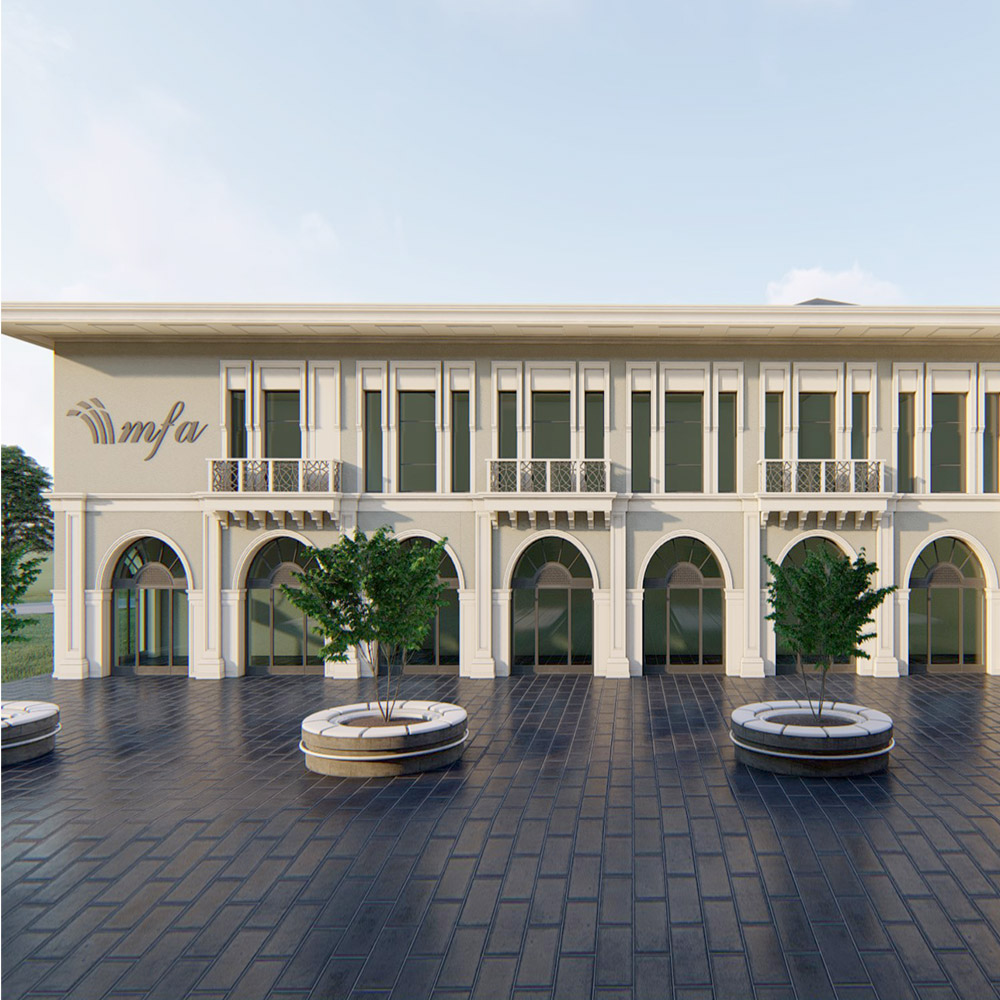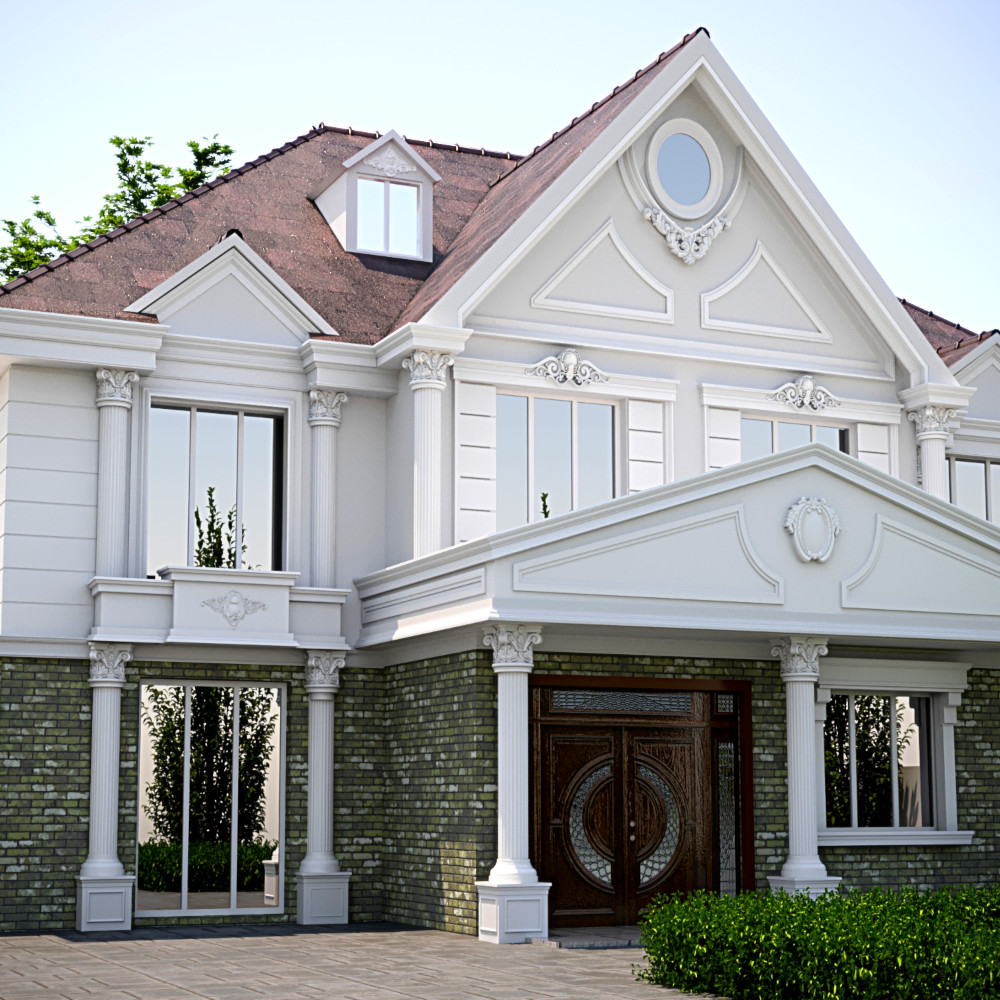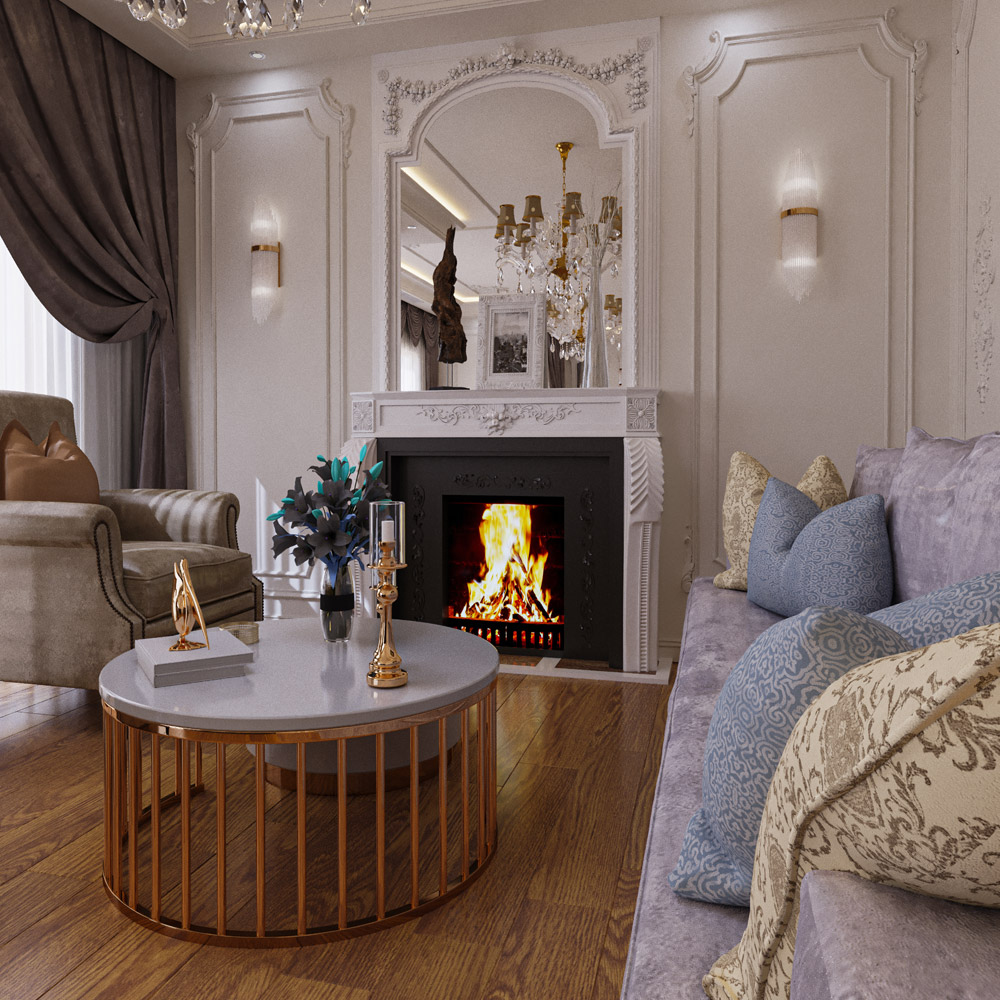Facade Design
Facade Design
Facade Design
Facade design is one of the most important elements of a building's exterior, both aesthetically and functionally. The facade directly affects not only the external appearance of the building, but also the physical properties such as heat, light, sound, water insulation and air flow that affect the interior spaces of the building. Therefore, facade design is one of the cornerstones of architecture.


I. Facade Cladding Systems and Technologies
a. Precast Facade Cladding Systems
- Precast Polyurethane Facade Systems: Known for its lightness and high insulation properties, polyurethane is used in precast facade systems to give the building a modern and stylish appearance. It also provides easy installation and energy efficiency.
- Precast Glass Fiber & Fiber Reinforced Concrete (GRC & GFRC): Concretes reinforced with glass fiber provide lightness and durability. These types of facade cladding can be produced in different colors and patterns, which offers design flexibility.
- Precast Polystyrene Facade Systems: Known for its high thermal insulation properties, polystyrene offers low weight and good durability. It can also be preferred as an economical solution.
- Precast Surface Coated Betopan: Betopan is a durable and aesthetically pleasing material that can be created with a wide variety of surface textures. It provides good heat and sound insulation.
- Precast Concrete Imitation Stone (Composite Stone): Composite materials used to obtain the natural stone appearance provide advantages in terms of both aesthetics and durability.
- Precast Granite & Marble Coating: Natural stones such as granite and marble are luxurious and long-lasting facade coatings. They are both durable and create a visually elegant effect.
Facade cladding systems cover the materials and techniques used to protect the exterior from external factors and to add aesthetic value. These systems are selected in accordance with the design of a building and meet the requirements of the structures in terms of both visual and durability.
Precast refers to concrete or composite materials that are pre-fabricated in a factory and then assembled on site. Precast façade systems offer a variety of alternatives that are both durable and aesthetic. Some examples include:

b. Glass Facade Systems
Glass is one of the indispensable materials of modern architecture. Increasing the use of glass in facades provides many advantages both aesthetically and functionally.
- Classic Covered Facade Systems: These are systems where glass panels are connected with metal frames. This design provides a classic and stylish look.
- Transparent Facade Systems: Using transparent glass panels, this design creates a visual connection between the interior and the exterior. Natural light utilization and energy efficiency are ensured.
- Structural Silicone Facade Systems: Glazing is assembled with structural silicone, which provides a seamless facade surface. It is frequently preferred in modern buildings.
- Skylight Systems: Skylights, known as roof skylight systems, increase the energy efficiency of the building by letting in natural light and add an aesthetically elegant air.
c. Compact Laminate Facade Cladding
Compact laminate facade claddings stand out with their durability and aesthetic diversity, especially on exterior facades. While these materials show high durability, resistance to heat and weather conditions, they can be produced in different colors and textures.
d. Aluminum Composite Facade Systems
Aluminum composite panels are known for their durability and light weight. These materials are often chosen to achieve a modern and stylish look. Aluminum composite systems can be offered in a wide range of colors and textures, and are also easy to clean and long-lasting.
e. Mesh Facade Cladding
Mesh facade claddings are cladding systems generally made of metal wire mesh or thin metal sheets. These designs not only add aesthetic value to the building but also protect the building from external factors such as sun rays, rain and wind. It also facilitates air flow and helps regulate the temperature inside the building.

II. Facade Lighting Design
Facade lighting design is used to aesthetically illuminate the exterior of a building at night. This design enhances security around the building while also beautifying the night view. Facade lighting is also used to emphasize the architectural elements of the building. LED technology is widely preferred in facade lighting designs as it offers low energy consumption and long-lasting lighting solutions.
Facade lighting design is used to aesthetically illuminate the exterior of a building at night. This design enhances security around the building while also beautifying the night view. Facade lighting is also used to emphasize the architectural elements of the building. LED technology is widely preferred in facade lighting designs as it offers low energy consumption and long-lasting lighting solutions.

III. Facade Restoration and Renovation
Facade restoration is a process that aims to adapt historic buildings to modern requirements while preserving their original aesthetic and structural features. In this process, processes such as repairing the façade surface, material changes and the application of current insulation technologies are carried out. Renovation is a broader concept and involves modernizing the overall structure of the building. While facade restoration ensures the preservation of cultural heritage, renovation creates a functionally and aesthetically innovative building.

IV. Facade Engineering and Structural Design
Facade engineering covers calculations and designs to ensure that facade systems are safe, durable and efficient. Facade engineering includes the selection of materials used, calculation of load-bearing systems, weather resistance and heat and water insulation.

a. Structural System Calculations
The structural durability of façade systems is based on the correct calculation of the load-bearing systems. These calculations ensure the safety of the building against external factors such as wind loads, weight bearing capacity and earthquakes.
The structural durability of façade systems is based on the correct calculation of the load-bearing systems. These calculations ensure the safety of the building against external factors such as wind loads, weight bearing capacity and earthquakes.

b. Heat, Water and Sound Insulation
Heat, water and sound insulation play a very important role in facade design. Thermal insulation increases energy efficiency and allows the temperature of interior spaces to be controlled. Waterproofing prevents rain and moisture from damaging the structure, while sound insulation increases the comfort of the interior.
Heat, water and sound insulation play a very important role in facade design. Thermal insulation increases energy efficiency and allows the temperature of interior spaces to be controlled. Waterproofing prevents rain and moisture from damaging the structure, while sound insulation increases the comfort of the interior.









